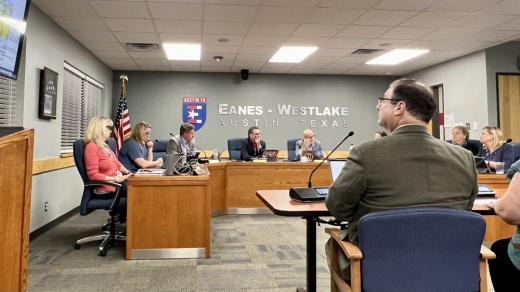The exact budgetary impact this will have on the 2022-23 school year will depend upon enrollment and tax base growth. With an initial projected enrollment of 7,800-7,875, the district is estimated to have a deficit of nearly $1 million-$1.5 million, according to district documents.
“The reality is that if we don’t get a significant raise, we are going to lose staff, and we cannot afford to lose our most valuable asset,” Board Member Jennifer Champagne said. “I understand the implications of that down the road being that we will likely have to make hard choices.”
EISD has a particular need to fill child nutrition and custodian positions, according to the district. An additional $100,000 was put aside to increase compensation for these positions, which are otherwise paid for out of a self-sustaining fund.
“The fact that we can’t fully staff our custodians impacts our teachers and other people in the building,” Board Member James Spradley said. “This is a holistic problem.”
Substitute teachers were also included as part of the raises; however, the raise they receive will be added into the raise they previously received in October when base pay went from $103 to $120 a day.
“Our model is a wonderful model; it is what public education should be able to offer,” Balthazar said. “We give more time to our teachers; they have a lower class load; we have far more programs ... but it is an expensive model because it is very staff-rich. I’m not sure how we go forward in any competitive way without really examining and figuring out a way to change our model into a less expensive version.”
During the meeting, Superintendent Tom Leonard navigated through several spreadsheets allowing the manipulation of different factors to see fiscal impact, including enrollment and tax base growth. While EISD's tax base grew from a projected 9.1% to 21.4% for 2022-23, enrollment went down.
Enrollment within the district was anticipated in earlier meetings to be 7,922. Updated figures from the April meeting predict enrollment for 2022-23 to be 7,756, a difference of 166 students. This decrease in enrollment takes away about $1 million in school funding, EISD Chief Financial Officer Chris Scott said.
EISD is a land-locked district, meaning there is little room for additional growth in the student population inside the district’s borders, Scott said. Despite this, several board members said they believed there was more flexibility in predicted enrollment for next year due to the control EISD has over students transferring into the district.
Additionally, Leonard said there is talk among other local school districts and superintendents about rallying to increase the basic allotment for schools in the 2023 Texas legislative session, which several board members agreed with.
Impact of House Bill 3
House Bill 3 is a sweeping educational reform bill passed by the Texas Legislature in 2019. While the bill did provide over $6 billion in education investments and $5 billion toward replacing school property taxes with state aid, the shift from funding schools through district-generated funds to state funds created an unsustainable model for public education, Champagne said.
“We knew when HB 3 was enacted that it was an unsustainable path and that this is exactly what would happen, and that it was specifically designed this way to hurt districts like EISD because we’re not allocated as much money as others, which ultimately impacts our staff,” Champagne said. “It has nothing to do with the wealth of this community. It has to do with our staff.”
The landmark bill was a way to level the playing field between schools, Balthazar said. Until House Bill 3, Balthazar said the district always had a few advantages when it came to recapture. Under the current funding system, however, Balthazar said the education model EISD built has become untenable.
“We are not running the program that the Texas Legislature wants us to run. We are running a much better program,” Leonard said.
All schools in Texas receive a certain amount of money per student enrolled, called the basic allotment. For 2021-22, the basic allotment per pupil is $6,160. Not adjusting for these geographic differences hurts EISD in terms of funding, Leonard said.
“If you’re living in some parts of the state of Texas, the amount of money they’re giving you per pupil actually works," Leonard said. "That’s not necessarily true in Austin because our cost of living has gone up significantly.”





